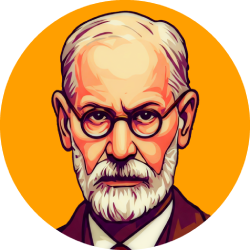The field of psychoanalysis is rich in stories of great minds that shaped our understanding of the human mind. Among these figures, Sigmund Freud and Carl Gustav Jung stand out as two of the main names in the history of psychology. Although they shared a narrow professional and personal relationship at the beginning of their careers, their theoretical and philosophical differences eventually led them to a break that changed the course of psychoanalysis forever.
Introduction to the relationship between Freud and Jung
The relationship between Freud and Jung began in 1907, when Jung, a young Swiss psychiatrist, contacted Freud, already established as a leading figure inpsychoanalysis. The initial correspondence between them reveals a great mutual admiration, with Jung expressing his appreciation for the work of Freud and Freud seeing in Jung a possible successor.
This promising partnership seemed to revolutionize psychology. However, as time passed, significant differences began to emerge between worldviews and the theories of the two men.
Theoretical Divergences: The Role of the Unconscious
One of the main differences between Freud and Jung was related to the concept of unconscious. For Freud, the unconscious was a repository of thoughts, desires, and memories, often sexual or aggressive in nature. For Jung, the unconscious had a wider and more positive function, including not only personal content, but also a “collective unconscious”, shared by all humanity.
This difference in perspective on the unconscious reflected different fundamental views on human nature and the purpose of psychoanalysis. While Freud saw therapy as a means of revealing and resolving repressed conflicts, Jung believed that the process should help patients integrate their personality and achieve “individuation,” or complete self.
The concept of archetypes
Jung introduced the concept of “archetypes” as universal patterns of thought and experience present in the collective unconscious. These archetypes, according to Jung, were the basis for myths, dreams and symbols shared by cultures around the world.
Freud, on the other hand, was more focused on individual experience and childhood influences on psychological development. He saw the myths and symbols as derived from universal desires and conflicts, but not necessarily as expressions of a collective unconscious.
The break and its consequences
The relationship between Freud and Jung began to deteriorate around 1913, as his theoretical differences became more evident. The breaking point came when Jung published “Metamorphoses and Symbolism of Libido,” a work that presented his view of the collective unconscious and archetypes, clearly in disagreement with Freud’s theories.
The break between these two giants of psychoanalysis had deep consequences for the field. Jung followed his own way, developing analytical psychology, while Freud continued to lead the psychoanalytic school. This watershed not only defined two distinct branches of psychology, but also influenced many other areas, such as anthropology, philosophy and literature.
Today we can see the contributions of both Freud and Jung and complementary, offering valuable insights on the complexity of the human mind. Although their disagreements have led to a break, their legacy continues to inspire and guide research and practices in psychology and beyond.
Reflecting on the contributions and differences between Freud and Jung reminds us of the importance of the diversity of thought and the open dialogue in the search to better understand ourselves and the world around us. As we continue to explore the mysteries of the human mind, the lessons learned from these two pioneers remain relevant and inspiring.


